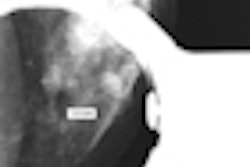Dear PACS Insider,
A security breach and unauthorized access to imaging records is a bad dream for any healthcare institution. But for Griffin Hospital in Derby, CT, that nightmare recently became a reality.
For a month after being fired from a radiology group that had a contract with the hospital, a radiologist accessed the 160-bed hospital's PACS network, scanning directory listings of 957 patients and downloading image data from 399 of those patients.
The radiologist allegedly hacked the network in an effort to direct Griffin's patients to a new facility. Since discovering the intrusion, the hospital has notified the patients that their imaging records have been hacked and informed Connecticut Attorney General Richard Blumenthal. Contributing writer Donna Domino has our coverage, which you can read by clicking here.
In other news, personal electronic health records have generated a fair amount of hype, but integrating radiology images and information may prove to be a difficult challenge. That was the case for Heidelberg University Hospital in Germany, which was unable to make use of the Integrating the Healthcare Enterprise (IHE) initiative in its pilot personal electronic health record project due to a lack of vendor support.
The institution was able to develop its own implementation concept, but it required a highly complex system that suffered from a number of disadvantages. Oliver Heinze presented his institution's experience during a session at the European Congress of Radiology (ECR) in Vienna, Austria, and our coverage of his talk is the subject of this month's Insider Exclusive article. You can access it before it's published for the rest of our AuntMinnie.com members by clicking here.
In other stories from ECR, the European Union is working to address the legal issues surrounding e-health and teleradiology -- find out what they're doing by clicking here. Also, discover how a regional RIS/PACS is optimizing radiology service in Spain. Stay tuned for more PACS coverage from ECR in the coming weeks.
It's no secret that handheld devices such as the iPhone have drawn a lot of research and clinical interest in radiology informatics. But adoption may have hit a bump in the road following a recent U.S. Food and Drug Administration (FDA) decision to classify an iPhone viewing application as a class III device requiring premarket approval (PMA).
Some feel the FDA's decision could affect the growing use of the technology, as it will require the software to undergo the more lengthy PMA process. You can find all of the details by clicking here.
The news this month wasn't all bad for iPhone advocates, however, as an iPhone app was recently judged to be sufficient for determining stenosis on coronary CT angiography studies.
Finally, associate editor Cynthia E. Keen has the details on why imaging shouldn't be ignored when planning healthcare IT stimulus goals.
Do you have a topic you'd like to see covered in your PACS Digital Community, or are you interested in submitting an article to AuntMinnie.com? Please feel free to drop me a line.




















